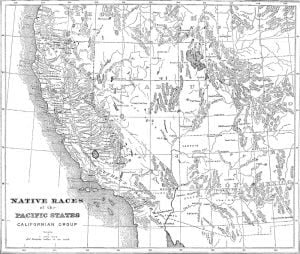Comeya Tribe
Comeya Indians. Apparently a collective name indefinitely applied to the Yuman tribes from San Diego eastward to the lower Rio Colorado. By many authors it has been assumed to be synonymous with Diegueno, which doubtless it was in part. Just what tribes it included can not now be told, but the term is here applied only to interior tribes, the Diegueno about San Diego being excluded. When visited by Anza, Garcés, and Font, in 1775, the “Quemayá” wore sandals of maguey fiber and descended from their own territory (which began at the mountains, in lat. 33 08 , some 100 … Read more



